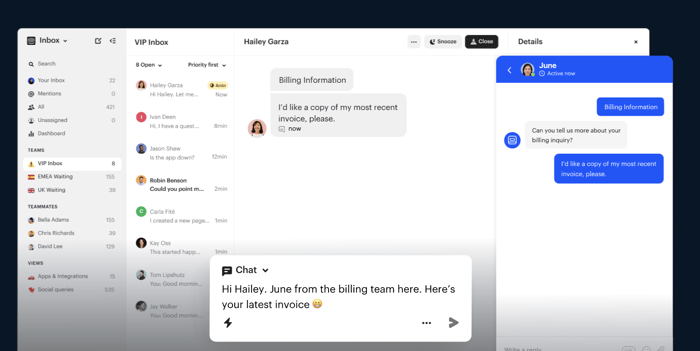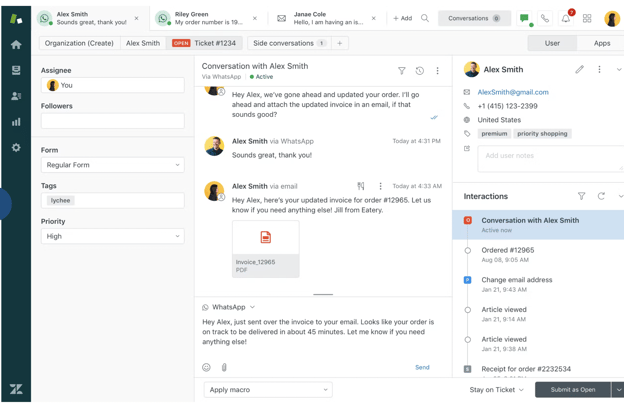The Essential Toolstack for Onboarding In SaaS — featuring eWebinar, Userpilot, email automation tools, and chatbot/support tools
There are so many onboarding tools for SaaS available, it can be overwhelming for product managers.
When designing an onboarding toolstack, we’ve found it’s best to start from your users’ needs. Why are they using your product? And what do they need to know or do to succeed? Once you understand those things, it’s far easier to assess different onboarding tools.
In this blog, we’ll get you started by comparing eight of the best onboarding tools in different categories:
- What is onboarding in SaaS?
- What is an onboarding toolstack?
- What are the essential tools you need in your stack for onboarding users in SaaS?
- Automated webinar tools for your onboarding toolstack
- Automated in-app messaging tools for your onboarding toolstack
- Email automation tools for your onboarding toolstack
- Chatbots and other support tools for your onboarding toolstack
- [Conclusion]
What is onboarding in SaaS?
Onboarding is the process of helping new users to a point where they can use and get value from your service.
While it can be done person-to-person (sometimes called “concierge onboarding”), in SaaS it is usually delivered on a self-serve basis in-app through automation, via contextual and goal-based triggers.
What is an onboarding toolstack?
Your onboarding toolstack is made up of all the different software tools that are used to deliver onboarding experiences to your users.
In SaaS, it’s standard practice to bring together a wide variety of third-party apps to perform different roles within a single service rather than to develop everything you need in-house.
What are the essential tools you need in your stack for onboarding users in SaaS?
Your users will have lots of different use cases, priorities, problems, and different tools they’re using alongside yours.
That’s why you’ll normally need several onboarding tools in your stack: to cater to users’ individual needs, rather than forcing them all to follow one single workflow.
For us, the most important types of tool in onboarding are:
- Automated webinar tools
- Automated in-app messaging tools
- Email automation tools
- Chatbot and other support tools
The rest of this blog takes a closer look at two of the best tools on the market in each category.
Automated webinar tools for your onboarding toolstack
Webinars are great for onboarding, because most people learn far more effectively by being shown how to do things than reading about it.
Automated webinars enable you to take users through onboarding activities at scale and on demand with pre-recorded demos or training sessions.
Obviously, this is far more cost-effective than hosting the same webinar repeatedly for new cohorts of users. Plus, automated webinars can be used by many different teams:
- Customer success teams - welcoming new users and demonstrating features
- Marketing teams - converting prospects
But different tools have different capabilities. Let’s explore some of them.
1. eWebinar: For on-demand webinars with great analytics
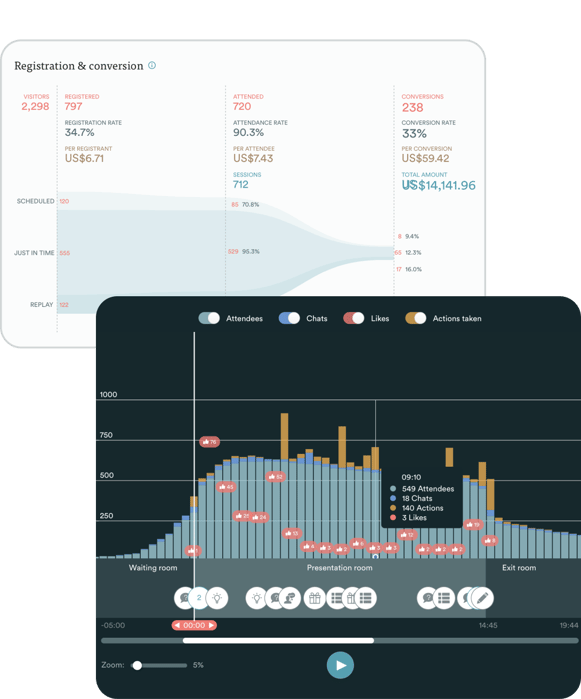
Who is this for?
eWebinar is ideal for SaaS customer success teams, marketing teams in SaaS and technology businesses, and entrepreneurs.
Why choose eWebinar?
As the only platform dedicated exclusively to automated webinars, eWebinar gives you an exceptionally wide range of features which is always expanding, and which takes the whole process of webinar design, sign-up optimization and follow-up into account.
These include:
- Moderator live chat during events
- Polls and survey questions
- Personalized welcome messages for attendees
- A monthly registrant limit in the thousands
- Extensive, actionable analytics
- Incredibly easy to get started
- Integral high-converting registration page builder
- Stunning visuals
Anybody looking to build high-quality, interactive automated webinars into their onboarding flows should sign up for free with eWebinar.
Pro Tip: Check out this automated webinar tool comparison blog for a more in-depth review.
Pricing
- From $99 per month for one webinar per month with a monthly registrant limit in the thousands, to $299 per month for 15 webinars (+$15/per month for each additional)
- 14-day free trial
2. Zoom Webinars: For live webinars with multiple add-ons
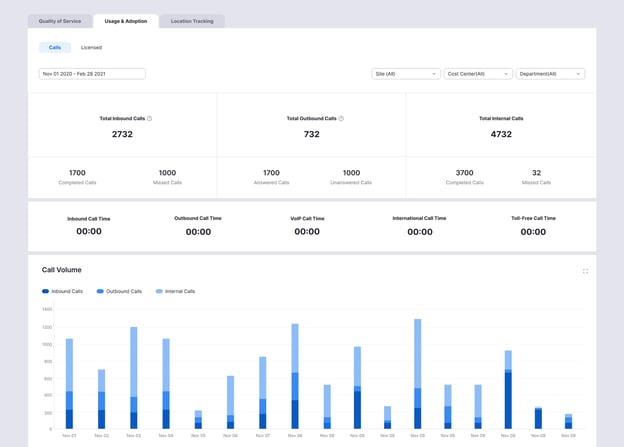
Who is this for?
Enterprises that will be running large numbers of webinars, necessitating multiple user accounts and billing options. Complex products that need very bespoke concierge onboarding.
Why choose Zoom Webinars?
Video conferencing giant Zoom has upped its webinar game this year, launching a bolt-on Zoom Webinars tool. But it’s still aimed at live webinars, not automated, pre-recorded ones.
The features are skewed towards networking and conversation:
- Chat is available for live webinars only
- While it’s possible to record these sessions and make them available later - there’s no scope for people watching replays to interact
This limits Zoom Webinars’ use for building automated webinars into your onboarding workflows. It is much more suited towards training groups of users on specific, bespoke use cases.
Pricing
- Starts at $79/month/license for unlimited webinars for up to 500 attendees, rising to $6,490/month/license for up to 10,000 attendees - plus the cost of Zoom Meetings
- A wide range of paid-for upgrades can be added on (eg audio conferencing, Zoom Event Services)
- No free trial or demo available
Automated in-app messaging tools for your onboarding toolstack
One of the best places to onboard users is inside your app itself.
Context is key: users are best placed to learn, remember and act when the guidance and the functionality is right in front of them.
In-app messaging tools need to be in your onboarding toolstack so you can provide contextual help and information at the moment it’s needed, using:
- Tooltips and hotspots
- Checklists
- Welcome screens
- Product walkthroughs
- Modals, slideouts and pop-ups
With in-app messaging, you can hold your users’ hands and help them overcome workflow friction points so as to realize value as quickly as possible.
1. Userpilot: For personalized and contextual user onboarding in-app flows
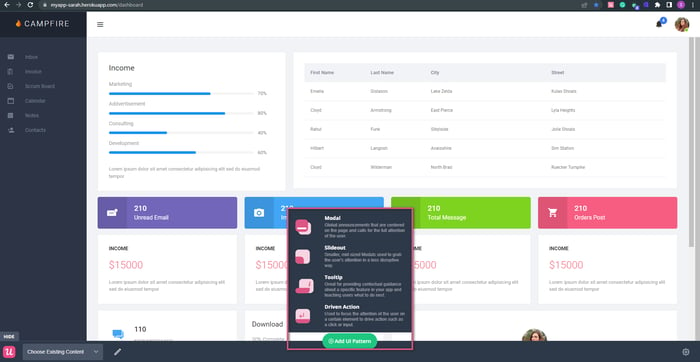
Who is this for?
SaaS product managers and product marketing managers. Userpilot has been specifically designed to let these people build out a massive range of onboarding experiences without code.
It’s ideal for mid-sized Saas companies that want to activate and engage their users, improve retention and reduce churn.
Why choose Userpilot?
Userpilot excels in the variety of user onboarding experiences it allows you to create. As well as all the UI elements mentioned above, it enables you to deploy:
-
NPS surveys and contextual microsurveys
-
A/B tests
-
Help widgets and resource centers
-
Detailed analytics
Experiences can be activated by a wide range of triggers based on user history, recent actions, cohort, plus self-defined custom segments.
Critically, Userpilot offers unlimited feature usage to all users - rather than reserving some features for customers who pay more.
Pricing
- From $249/month for up to 2,500 monthly active users (price scales up on MAU basis).
- Enterprise pricing starts at $749/month
- Free demo available
2. Drift: For in-app chat and conversational marketing
Who is this for?
Drift is a great tool for Product Marketers and Customer Success Managers to communicate with their customers in-app using chatbots to deliver timely and personalized messages based on the users’ stage in the user journey.
Why choose Drift?
Drift offers some cool communication tools that will allow you to improve engagement, feature adoption, and retention in addition to what e.g. Userpilot does:
-
Personalized intelligence lets you personalize messages based on your user’s / visitors movements through your site.
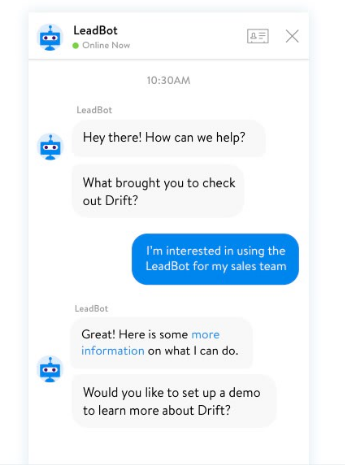
Drift’s Personalized Intelligence
- AI and custom chatbots for qualifying visitor’s intent and customizing the experiences.
- Supports chat + video + email - for a 360 communication across all channels.
Pricing
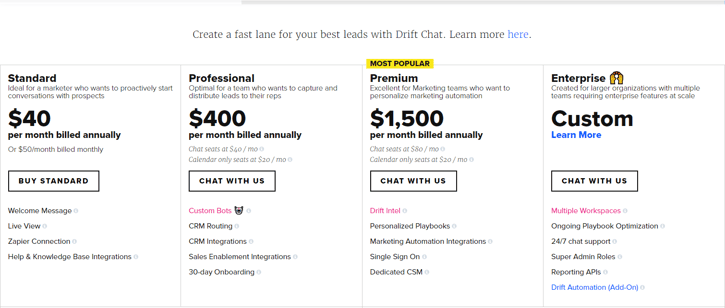
Drift offers custom pricing, so you can’t easily figure it out from the website. Good news though - you can chat with their chatbot to find out! :)
Email automation tools for your onboarding toolstack
In-app messaging is essential for onboarding users when they’re logged in. But what about getting them back to your app when they’re not?
Email automation tools are another vital part of your onboarding toolstack for:
- Getting brand new users started and logged in
- Reminding logged-out users to come back to complete unfinished tasks
- Re-engaging and winning back users who are not using your app
- Upselling users with special offers and publicizing new feature and product launches
Let’s take a look at some options.
1. ActiveCampaign: For complex automation, great integrations and ready to use templates
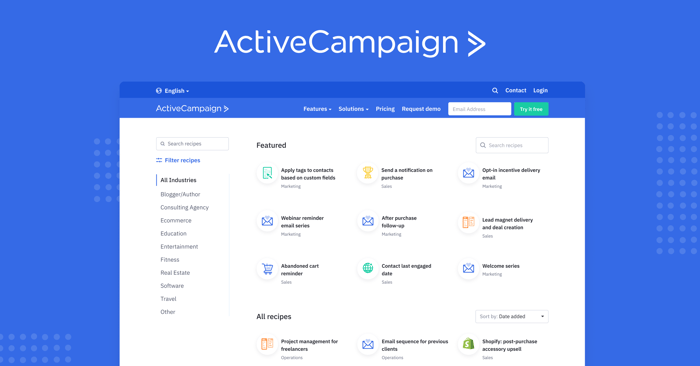
Who is this for?
ActiveCampaign is aimed at sales and marketing teams in small to mid-sized businesses in all verticals that need email automation and CRM functionality.
Why choose ActiveCampaign?
ActiveCampaign boasts an extensive library of ready-made (and device-responsive) message templates, which is very helpful.
It also supports a lot of third-party integrations - and their team will migrate you from other platforms for free!
Most importantly, ActiveCampaign offers an extremely wide range of email (and other) automation options. You can deliver triggered campaigns, automatic segmentation, dynamic email content, and even go multichannel with SMS.
Finally, the built-in CRM combines perfectly with the complex automation options.
The downside? It’s not easy to use. This is an advanced tool that beginners will struggle with.
Pricing
- Between $9/month and $229/month for up to 500 contacts depending on package (price scales with contact numbers - $405/month on Lite package for 100,000)
- Free trial
2. Drip: For ease of use and simplicity focused on e-commerce needs, great for SaaS

Who is this for?
Drip is at the other end of the complexity scale to ActiveCampaign. It’s built with simplicity in mind, making it ideal for general marketers and for smaller or less experienced businesses - particularly in e-commerce and SaaS.
Why choose Drip?
Two things set Drip apart from other email automation tools.
Firstly, it’s easy, intuitive and even fun to use. With a very up-to-date look, Drip’s range of pre-defined customer actions make it very straightforward to get started, even with complex campaigns. Although it lacks the email template library depth that ActiveCampaign has, Drip’s template builder is simple and packed with options.
Secondly, its focus on e-commerce. Indeed, Drip positions itself as an “e-Commerce Relationship Management” platform. So, if your workflows focus on B2C selling, stock management, product descriptions and comparisons, etc Drip has a huge head start.
Pricing
-
From $19/month for up to 500 contacts (prices scale with contact numbers - $1,199/month for 100,000)
- 14-day free trial
Chatbots and other support tools for your onboarding toolstack
No matter how well designed your onboarding flows are, some users will run into problems.
Your onboarding toolstack needs to include functionality for users to raise and you to solve their problems. Ideally, you would have both:
- Self-serve support - studies have shown that a full 81% of SaaS users try to solve their own problems before reaching out for help. Self-serve support is also highly scalable without added cost
- Agent-led support - for the tougher or more unusual problems that need personal attention
There are loads of different ways of providing support to users. Here are two of the best.
1. Intercom: For instant customer engagement via chatbots
Who is this for?
Intercom is a massive product, with three main strands: user engagement (chat and chatbots); product walkthroughs; and support ticket management. The first is Intercom’s strongest suit by some distance - the others are somewhat lacking.
Any product manager or product marketing manager who wants to provide automated conversational support can benefit from Intercom’s features.
Why choose Intercom?
Automated conversational support enables you to solve a huge number of commonly-recurring user problems, 24/7, without adding cost - and Intercom provides some of the best, most sophisticated and easy to use chatbots available.
Intercom’s bots use machine learning to offer up suitable answers to questions, meaning that you don’t have to program it extensively to get started and that it gets better at solving problems over time.
It has a wide range of integrations, making it easy to plug into your stack, but the analytics provided are relatively poor.
Finally, Intercom’s pricing is opaque to say the least. That lack of transparency, and the fact that all packages include some of the weaker product tour and support features, is a bit of a turn-off.
Pricing
- Apart from a $79/month package for “very small businesses”, Intercom does not make their pricing public. Pricing is based on seat numbers and users receiving outbound messages per month, and comes in three tiers: Support, Customer Engagement, and Marketing.
- Packages can be customized (at cost) with add-ons.
- Free demo available
2. Zendesk: For complex use cases but lacking proper analytics
Who is this for?
Whereas Intercom’s chatbots are great for solving recurring, simple problems, Zendesk is tailored for handling complex, unique support tickets.
It’s not really aimed at self-serve onboarding, being best suited to businesses where users encounter complicated problems that need personal attention to resolve.
Why choose Zendesk?
Zendesk is undoubtedly one of the best support tools available in terms of features, integrations, workflows and automations.
In particular, the power to link tickets together is great for learning from and building on knowledge your agents develop over time - and these can be collated into a valuable knowledge base (with advanced search capabilities).
However, Zendesk’s analytics are excessively complicated and difficult to set up, which is a definite negative.
At the Suite level, Zendesk bundles up a load of weaker features alongside the customer support functionality - but if you’re buying it solely for the support tools, it’s excellent value.
Pricing
- Support only starts at £15/month/agent ($20.50), while the Suite package is priced between £39/month/agent ($53.10) and £79/month/agent ($107.60).
- 30-day free trial
What’s the one thing you should take away from this blog?
The single most important point to bear in mind is that there is no ideal one-size-fits-all solution for onboarding out there.
That’s why assembling a bespoke onboarding toolstack that addresses the needs of your users is critical. Some tools that seem necessary to one company will be a waste of money for others.
But the types of tool we’ve looked at here are important for the vast majority of businesses, particularly in SaaS - and in our opinion, the options we’ve discussed are the best of the bunch.
If you don’t already have an eWebinar account, sign up for a free trial today. It’s quick, easy and you can start producing stunning automated onboarding webinars immediately!





